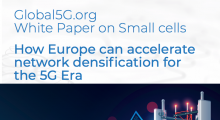IoRL: Indoor 5G Visible Light Communication and mmWave System

The Internet of Radio Light (IoRL) is successfully conducting performance tests of a hybrid Visible Light Communications (VLC) and 40GHz mmWave 5G compliant system in the Integer House lab at the Building Research Establishment (pictured below, left), during the months of August – December 2020. The objective of the trial is to measure the coverage, latency, location accuracy and EM exposure performance of the designed mmWave and VLC system, provide recommendations for improving the design and produce design guidelines for the optimal deployment of the Remote Radio Light Heads (RRLHs) in buildings.
The IoRL architecture is a layered architecture consisting of four layers namely: Service, Network Function Virtualisation (NFV), Software Defined Network (SDN) and Access. For more details, click here.
Deployments
The performance tests of a hybrid Visible Light Communications (VLC) and 40GHz mmWave 5G compliant system is being conducted in the Integer House lab at 4m x 6m RRLH Area 1 on the upper ground floor at the Building Research Establishment.
This experiment provides important dimensioning information of the expected coverage from 5G compliant VLC and mmWave access points to determine the number required per room in property and also location accuracy information that can be obtained for RSS VLC localisation and TDoA mmWave localisation systems. It allows the IoRL trial leaders to measure coverage, latency, location accuracy and EM exposure performance. A student from Brunel University taking mmWave measurements at ground level on a Viavi test receiver from transmissions of a RRLH is shown in the picture below (2nd left).
Results
The VLC communications LED and mmWave Tx antenna systems with typical mmWave coverage results recorded at 0.7 m above ground level are shown below (2nd and far right). Location accuracy using VLC and angling the receiver PD and lens towards the communications LED are recorded as part of the trial.

VLC Communications LED and mmWave Tx Antenna with mmWave TXs EVM Test
5G Empowerment
In principle, the RRH Controller and DRAN designs could be enhanced to operate at 400MHz bandwidths with 64-QAM and SCS=30KHz at mmWave to produce 840Mbps per RRLH Controller in a final commercial system. This 840Mbps is scalable since it can be provided to each of up to 32 RRLH Controllers in rooms in a building to a total of 10Gbps from a 10Gbps Ethernet ring home network. Latency measurements of much less than 0.5ms have been measured at 10 MHz bandwidth at the physical layer between the UE and the DRAN. Measurements have shown that two strategically located RRHs located at either end of a 4m x 6m room can provide full coverage. Further tests are required to measure latency and the TDoA location performance. The 10 MHz bandwidth limitations of communication LEDs has meant that a total bitrate of 6 Mbps with 4 QAM and SCS=30KHz can be provided using VLC per room. Using the existing communication LEDs the maximum propagation distance is 2m. Increasing the power could increase this. The maximum beam angle is 50 degrees, which means at a distance of 2m the coverage radius is 1m. Therefore 15 RLHs communication LEDs would be required for a 4m x 6m room.
Locations: Watford (UK)
Dates: Q3-2020; Q4-2020
Vertical partners: Building Research Establishment (Ledger House)
Partners involved: Eurescom GmbH, Brunel University, Cobham plc, Institut supérieur d'électronique de Paris, MostlyTek Ltd, Issy Média, Fraunhofer Institute for Integrated Circuits IIS, National Centre for Scientific Research Demokritos, Viotech, Warsaw University of Technology, Arcelik plc, RunEL, Holon Institute of Technology, Ferrovial Agroman sa, Oledcomm, Tsinghua University, Leadpcom, Shanghai-Feilo / Yaming, Fundación Centro de Innovación de Infraestructuras Inteligentes



